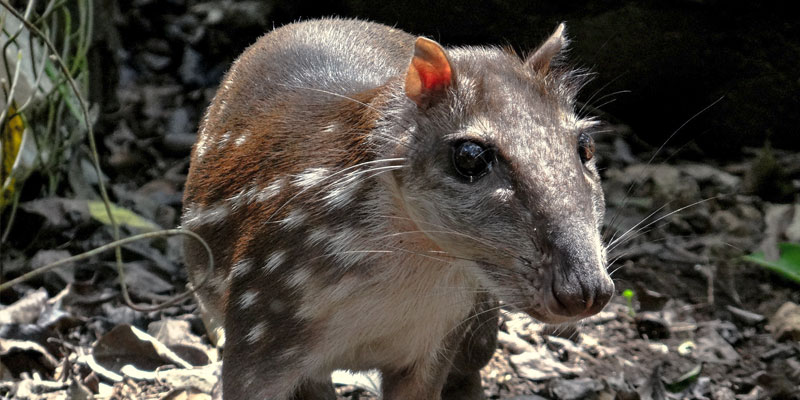The family Cuniculidae is comprised of large terrestrial rodents also known as pacas. This family includes two species within a single genus, Agouti. The two species are Cuniculus paca, the Lowland Paca and C. taczanowskii, the Mountain Paca. The pacas’ fossil records began in the Oligocene. They are found in Central and South America, ranging from east central Mexico to Paraguay. Overall, their biogeographic region consists of the southern portion of the new world, the neotropics. Their preferred habitat is beside rivers and streams in tropical forests. Near these water sources, the pacas are found at sea level to about 300 m elevation. This family consists of plant-eating rodents who compete with other species for food sources due to overlapping diets and habitats. The pacas’ is of mixed economic importance to humans, as they are considered to be a tender and mild-flavored food source but are also crop pests in some areas.
Cuniculids are known to be terrestrial, nocturnal, solitary mammals that prefer proximity to bodies of water for the construction of burrows in banks, slopes, or between rocks and tree roots. The water sources provide an efficient escape from predators; however, they usually do not dive or forage in the water. Although they are solitary rodents, pacas communicate through vocalizations, foot thumping, and tooth grinding. An interesting characteristic of cuniculids is their morphology. They have chunky bodies with short, stout legs, and their hind limbs are longer than their forelimbs. They have large heads with large eyes, and are nearly tailless. Cuniculids have a coarse pelage without under fur. Their skulls are also unmistakable because they are broad and massive, with short nasals and long frontals. The pacas’ zygomatic arches are inflated to form a hollow, resonating chamber that is used to amplify sound.





